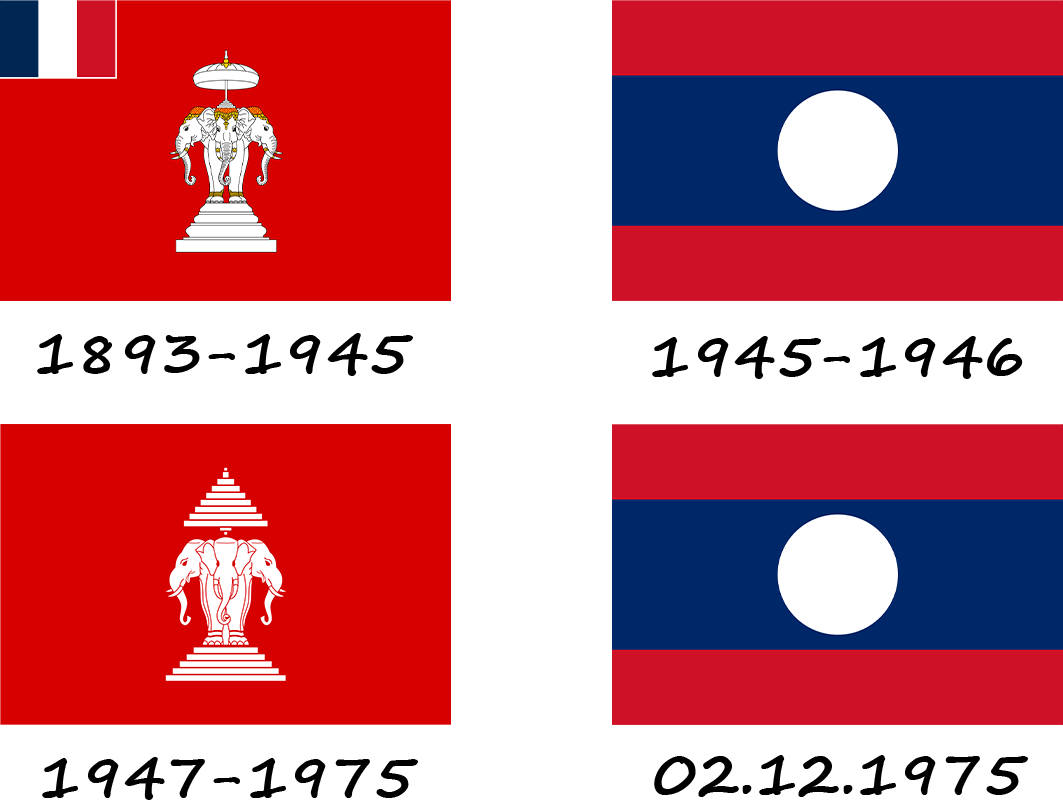The flag of Laos was adopted on December 2, 1975. The flag was previously used by the short-lived Lao nationalist government of 1945. It is one of the few communist flags that does not use the five-pointed star as an emblem.
The flag of Laos was adopted on December 2, 1975. The flag was previously used by the short-lived Lao nationalist government of 1945. It is one of the few communist flags that does not use the five-pointed star as an emblem.
The circle in the center of the flag is white and comes from the image of the full moon. White color means purity, honesty, absence of deception, fraud, betrayal and destruction of the nation. The circle of the moon is the center of the nation's unification to become one mind, to combine power, politics and governance into a single inseparable whole.
Blue or blue is the edge of the horizon, the color that is above everything in the world. No one can destroy it, which means the supreme sovereignty of a nation that governs freely, democratically, without borders or colonies of any other nation. It also signifies abundance and wealth in terms of crops and food.
The color red comes from the revolutionary spirit, from the blood of patriotism, this dark red color has flowed through the land of Laos in the past and will continue to flow in the future to protect their land. The red is the two protective barriers bordering the blue center and is meant to protect the moon - the sovereignty and independence of the nation. Land, water, air and sky belong to it forever, no one can invade the soul of the Lao nation.
From 1893 to 1945, Laos was colonized by France. This meant that Laos became a protectorate of France and depended on it for foreign affairs and defense. The French established control over local rulers and exploited the country's natural resources and labor force. Laos became part of French Indochina, and the French introduced their language, culture, and education. The French protectorate had a great influence on the political, economic and social development of Laos and contributed to the formation of the country's modern culture. During this period, the flag was red with a white elephant in the center and the flag of France in the upper left corner.

The design of the modern national flag of Laos was developed by Maha Sila Viravong in 1945. The flag consists of three horizontal stripes of red and dark blue, with a white disk in the center. The stripes symbolize the blood shed during the country's struggle for independence. The blue stripe represents the Mekong River, which is the source of life for Lao people and a symbol of prosperity. The white disk symbolizes the full moon against the backdrop of the Mekong River and embodies purity and integrity. Interestingly, the flag does not include the famous symbols of communism, such as the hammer and sickle, even though Laos is a communist country. In addition to its symbolic meanings, the Lao national flag is an important element of national identity and shows the pride and charm of the nation. The flag was used before the French invasion of the country in 1946. But the Lao Issara continued to use this flag in exile until its dissolution in 1949.
Between 1947 and 1975, the flag of the Kingdom of Laos was red with a white three-headed elephant symbolizing the Hindu god Airavatha. On the elephant's head is a nine-part umbrella, which is a royal symbol derived from Mount Meru in Buddhist cosmology, and the elephant stands on a five-tiered pedestal, representing the law on which the country is based. The flag reflected the country's ancient name, the Land of a Million Elephants.
In 1975, Pathet Lao reused the Viravong flag as the national flag. Thus, the flag of Laos was officially adopted on December 2, 1975, after a short-term use by the Lao nationalist government from 1945 to 1946.